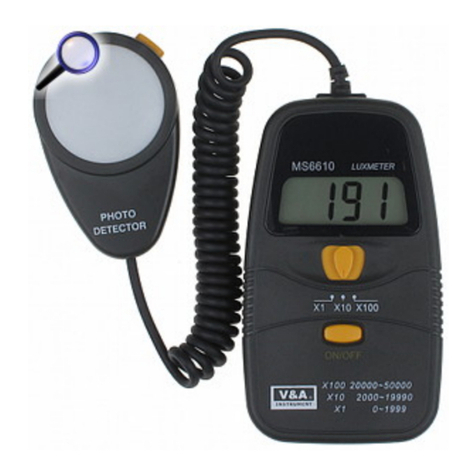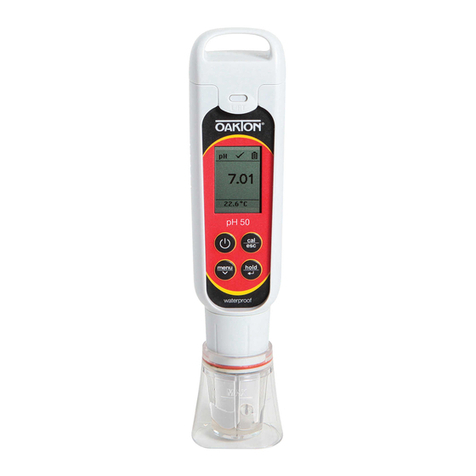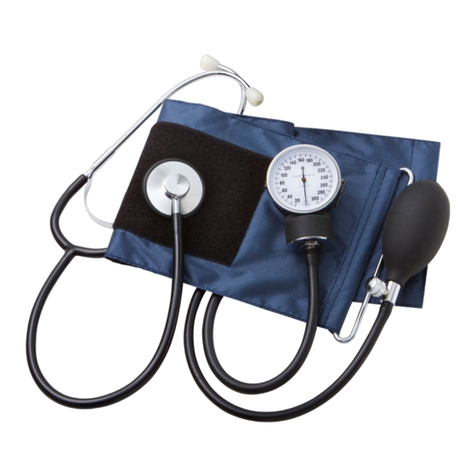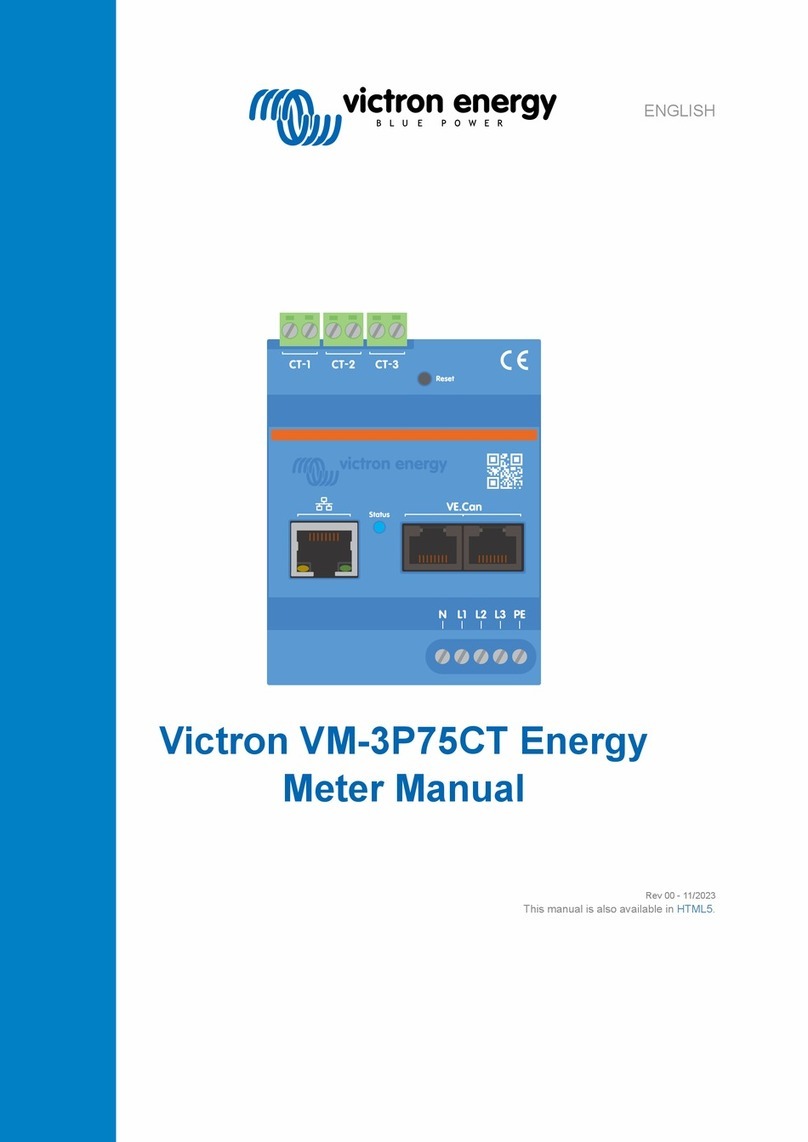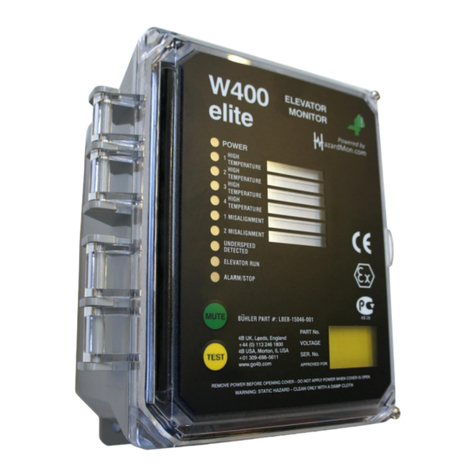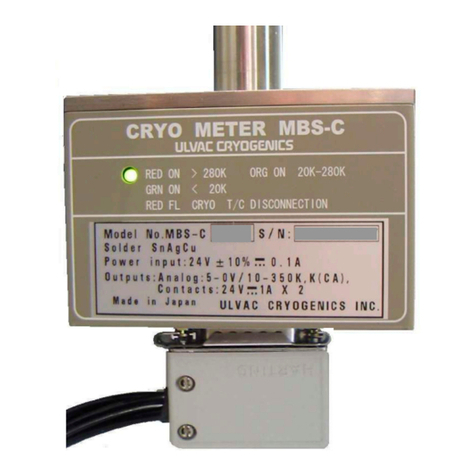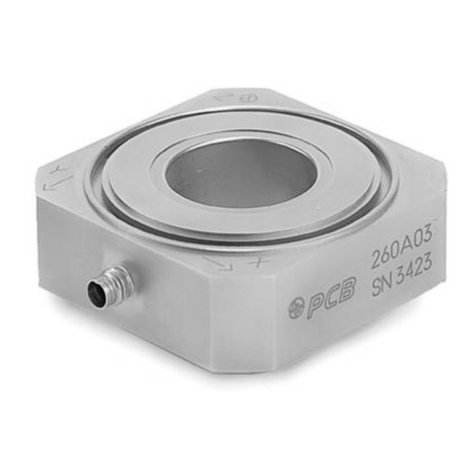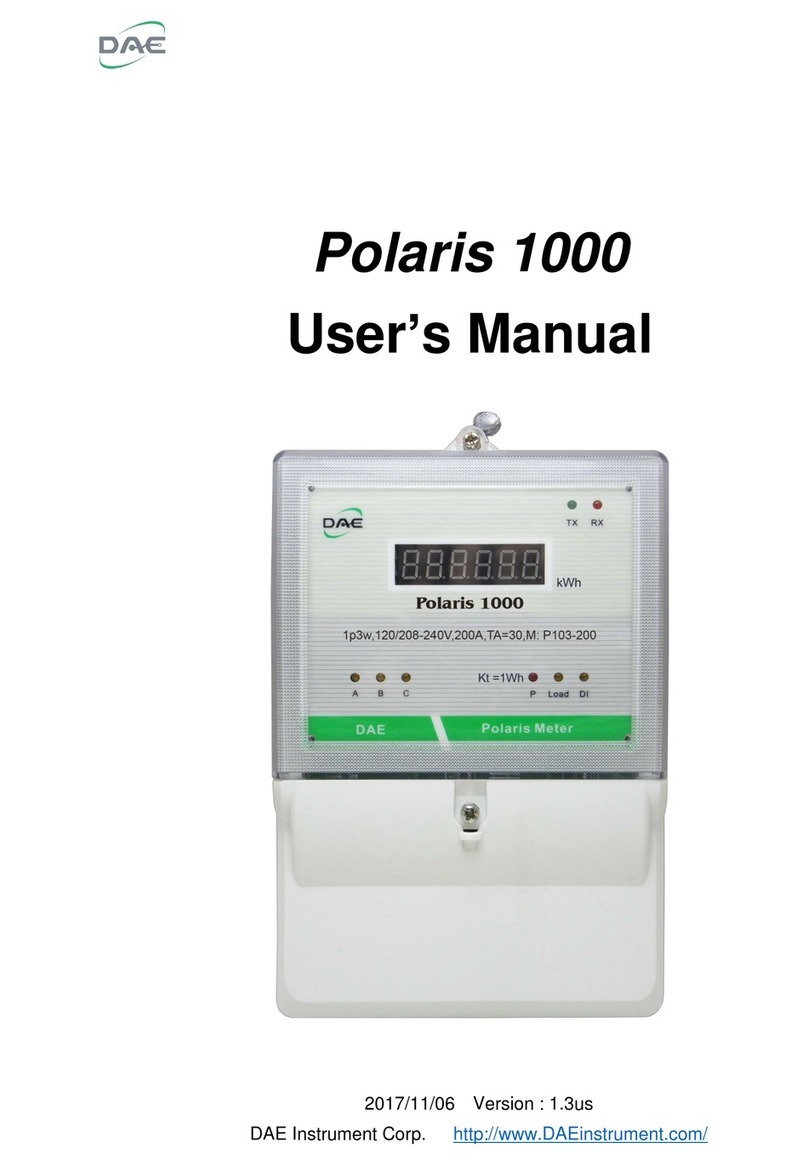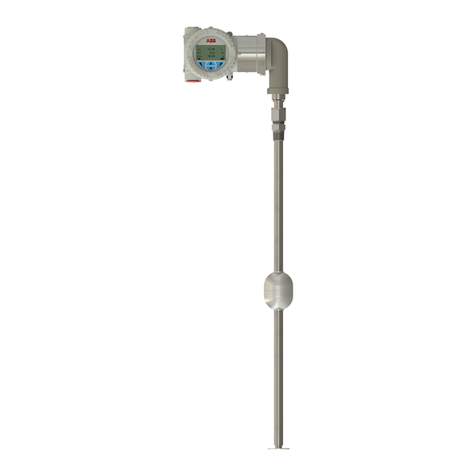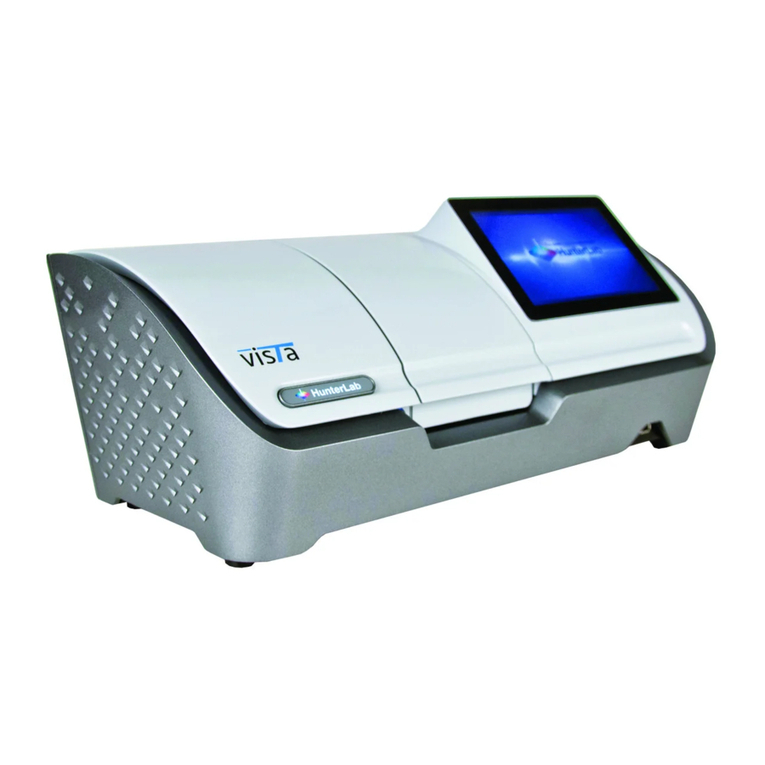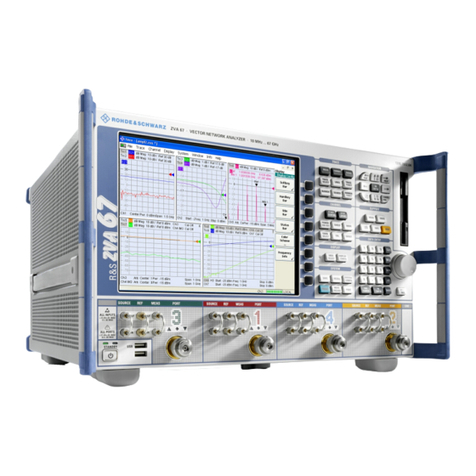Dilon Navigator 2.0 Troubleshooting guide

User/Service Manual
Manufactured by: Authorized European Representative:
Dilon Technologies, Inc. AG Medical
12050 Jefferson Avenue Route de l'Orme,
Suite 340 Parc des Algorithmes - Imm. "Homère"
Newport News, VA 23606 91190 Saint-Aubin
USA France
Phone: 1-844-DILONNAV http://ag-medical.com/

N2-5000-07-001 Rev 7 -2- Revised 10/16/2018
www.Dilon.com
Important Note
All personnel that will interact with this Navigator 2.0 System and Probes should read this Manual
and Service Guide to ensure proper use, handling, storage and maintenance.
This manual applies to white and purple colored Navigator 2.0 systems. The images of both systems
are used interchangeably.
This document and the information contained herein, is proprietary information of Dilon Technologies
and may not be reproduced, copied in whole or in part, adapted, modified, disclosed to others, or
disseminated without prior written consent of Dilon Technologies. This document is intended to be
used by customers as part of their Dilon Technologies equipment purchase.
Dilon Technologies provides this document without warranty of any kind, implied or expressed,
including, but not limited to, the implied warranties of merchantability and fitness for a particular
purpose.
Dilon Technologies has taken care to ensure the accuracy of this document. However, Dilon
Technologies assumes no liability for errors or omissions, and reserves the right to make changes
without further notice to any products herein, to improve reliability, function, or design. Dilon
Technologies may make improvements or changes in the products or programs described in this
document at any time.
Navigator 2.0TM is a trademark of Dilon Technologies.
Other trademarks and trade names are those of their respective owners.
Copyright Notice
Copyright 2018 Dilon Technologies, Newport News, VA 23606 United States of America.
Trademarks
Dilon Technologies™is a registered trademark of Dilon Technologies.
All other company and product names are trademarks or registered trademarks of their respective
owners.
Part Number
N2-5000-07-001 Rev 7 / October 2018

Navigator 2.0 User Manual & Service Guide
N2-5000-07-001 Rev 7 -3- Revised 10/16/2018
www.Dilon.com
User Manual: Table of Contents
1. Introduction........................................................................................................................................ 5
Operating Principle ............................................................................................................................. 5
Intended Use....................................................................................................................................... 5
Indications for Use.............................................................................................................................. 5
Manufacture and Distribution............................................................................................................. 5
Trademarks.......................................................................................................................................... 6
Regulatory and Safety Requirements............................................................................................... 6
2. System Overview and Components .............................................................................................. 9
3. Precautions...................................................................................................................................... 10
3A. General........................................................................................................................................ 10
3B. Control Unit, Battery, and Charger ........................................................................................... 10
3C. Probe........................................................................................................................................... 11
4. Control Unit, Battery, Cables, and Co-Pilot ............................................................................... 12
4A-1. Control Unit Features: Front .................................................................................................. 12
4A-2. Control Unit Features: Back................................................................................................... 15
4B. Battery (Part # N2-8500-00)...................................................................................................... 17
4C. Cables......................................................................................................................................... 19
4D. Optional Co-Pilot™Device (Part # GP-6801-00).................................................................... 21
4E. Useful Adjustments That Can Be Made During Procedures.................................................. 22
5. Probe Connectivity and Use ......................................................................................................... 23
6A. Navigator 2.0 with Wireless Pilot Probe................................................................................... 23
6B. Navigator 2.0 with Standard Lymphatic Mapping Probes, Superficial Head & Neck Probe,
Daniel Lung Probe, and Laparoscopic Probes............................................................................... 25
6C. Navigator 2.0 with 12mm Lymphatic Mapping Probe (Part # N2-9001-12).......................... 28
6. Running the Peak Procedure: 12mm Lymphatic Mapping Probe Only................................ 30
7A. Running a Peak Procedure....................................................................................................... 30
7. Troubleshooting.............................................................................................................................. 32
8. Specifications.................................................................................................................................. 34
9A. Navigator 2.0 System Specifications........................................................................................ 34
9B. System Accuracy........................................................................................................................ 35
9. Support Items .................................................................................................................................. 36
10A. Product Part Numbers............................................................................................................. 36
10B. Sterile Drape............................................................................................................................. 36
10. Maintenance..................................................................................................................................... 37
11A. Overview................................................................................................................................... 37
11B. Verification of Standard Gain (Calibration Quick Test)......................................................... 37
11C. Fuse Replacement Procedure................................................................................................ 39
11. Repair................................................................................................................................................ 41
12. Recycling.......................................................................................................................................... 42
13. Limited Warranty............................................................................................................................. 43


Navigator 2.0 User Manual & Service Guide
N2-5000-07-001 Rev 7 -5- Revised 10/16/2018
www.Dilon.com
USER MANUAL
1. Introduction
Operating Principle
The Navigator 2.0 System detects presence of gamma rays, emitted from radioactive isotopes in
body organs or tissue. System use requires the Navigator 2.0 Control Unit, which allows the user to
adjust the system's settings and produces a variety of signal outputs. The control unit is powered by
battery. The system provides an increasing or decreasing sound and visual counts that vary as
level of gamma radiation increases or decreases.
The control unit works in conjunction with a hand-held probe that is connected to the control unit
either via a cable or wireless technology. Detecting gamma radiation with a hand-held probe is
based on nuclear physics laws which allow detection of radiation emitted from a small source.
Placing probe close to a radioactive site increases number of counts detection and localization
occurs. Excision of the region of interest is then performed using standard surgical technique. On
the other hand, as the distance between the probe and the radiation source is increased, the sound
signal and number of counts decrease.
The control unit is used with any of the following Navigator™hand-held probe models. The probes
differ primarily in their size, shape, detector technology and connection to the control unit.
·14mm Wireless Pilot Probe™(angled tip)
·14mm Standard Lymphatic Mapping Probes (angled tip & straight tip)
·12 mm Lymphatic Mapping Probe (angled tip)
·11mm Superficial Head & Neck Probe (straight tip)
·10mm Daniel Lung Probe™(straight tip)
·10mm Laparoscopic Probes (310mm & 190mm Lengths, straight tips)
The system is supplied non-sterile. This manual includes guidelines for the use of the probes and
accessories within the sterile field.
Intended Use
For the detection and quantification of gamma radiation from gamma-emitting isotopes in the body or
tissues. Use for non-imaging procedures to measure the amount of radionuclide absorbed by a
particular organ or body region.
Indications for Use
For the detection and quantification of gamma radiation from gamma-emitting isotopes in the body or
tissues. Use for non-imaging procedures to measure the amount of radionuclide absorbed by a
particular organ or body region in open-surgical, laparoscopic or thoracoscopic surgical procedures.
Manufacture and Distribution
The system is manufactured and distributed by Dilon Technologies of Newport News, VA. Please
direct all inquiries about the Navigator 2.0 to Dilon Technologies.
The year of manufacture on the control unit are indicated in the first four numbers of the serial
number. The year of manufacture on the probe are indicated in the last two numbers of the serial
numbers.

Navigator 2.0 User Manual & Service Guide
N2-5000-07-001 Rev 7 -6- Revised 10/16/2018
www.Dilon.com
Trademarks
The following are trademarks of Dilon Technologies: Navigator 2.0™, Wireless Pilot Probe™, Dilon
Navigator GPS™, Dilon Navigator™, Dilon Technologies Navigator GPS™, Dilon Technologies
Navigator™, Dilon Technologies Navigator 2.0™, Daniel Lung Probe™, and Navigator™when used
in context with the above.
Navigator GPS® is a registered trademark of Dilon Technologies.
Regulatory and Safety Requirements
The Dilon Navigator GPS™System including Probes and accessories complies with the
following standards:
EC Directives
EMC Directive 89/336/EEC
Group l, Class B
EN 55011
EMC Directive 89/336/EEC
IEC 60601-1-2: 3rd Edition
Reciprocal Interference
This product has been tested and verified to ensure that there are no issues or concerns
regarding reciprocal interference. This includes EMI, EMC and RF. This product has been
certified and tested by 3rd party testing facilities. List of standards is as follows:
•Medical Electrical Equipment - Part 1: General requirements For Safety 1: Collateral
Standard: Safety Requirements For Medical Electrical Systems –IEC 60601-1-1: 3rd Ed.
•Medical Electrical Equipment - Part 1: General Requirements For Safety - Collateral
Standard: Electromagnetic Compatibility - Requirements and Tests –IEC 60601-1-2: 3rd Ed.
Safety
•Medical Electrical Equipment - Part 1: General requirements For Safety 1: Collateral
Standard: Safety Requirements For Medical Electrical Systems –IEC 60601-1: 2nd & 3rd Ed.
•Medical Electrical Equipment - Part 1: General Requirements For Safety - Collateral
Standard: Electromagnetic Compatibility - Requirements and Tests –IEC 60601-1-2: 3rd Ed.
•Medical Electrical Equipment - Part 1-6: General Requirements For Safety - Collateral
Standard: Usability - IEC 60601-1-6: 3rd Ed.
•Information supplied by the manufacturer of medical devices- EN 1041:2008
•Symbols for use in the labeling of medical devices - EN 980 :2008
•CAN/CSA C22.2 No. 60601-1, "Medical Electrical Equipment, Part 1: General Requirements
for Safety & Essential Performance; issued 2008-02-01 Ed. 2
•AS/NZS 3200-1-0, Deviations to IEC 601-1 for Application in Australia and New Zealand
CAUTION: Federal (USA) law restricts this device to sale and use by, or on the
order of, a physician.

Navigator 2.0 User Manual & Service Guide
N2-5000-07-001 Rev 7 -7- Revised 10/16/2018
www.Dilon.com
Table 1A. Explanation of Symbols
Type-CF Equipment
RX only Caution: Federal
(USA) law restricts this device
to sale and use by, or on the
order of, a physician.
Probe Date of Manufacture
Data Port Manufactured by
Eject
or
Consult instructions for use
Attention, consult
accompanying documents Temperature limitation
Remote Count Control Humidity limitation
Isotope Control Serial number
Calibrate Control Catalogue number
Fuse European Authorized
Representative
Battery Batch code

Navigator 2.0 User Manual & Service Guide
N2-5000-07-001 Rev 7 -8- Revised 10/16/2018
www.Dilon.com
Table 1A. Explanation of Symbols (Continued)
Battery Power Level Caution: High Voltage
ON/OFF
Wireless Capability
Acceptable shipping conditions: -15° C to 40° C
WEEE Symbol (EU only)
FCC statements: “This device complies with part 15 of the FCC Rules. Operation is subject
to the following two conditions: (1) This device may not cause harmful interference and (2)
this device must accept any interference received, including interference that may cause
undesired operation.”
IC statements: “This device complies with Industry Canada license-exempt RSS
standard(s). Operation is subject to the following two conditions: (1) This device may not
cause interference and (2) this device must accept any interference, including interference
that may cause undesired operation of the device.”
Cet appareil est conforme avec Industrie Canada RSS exemptes de licence standard (s).
Son fonctionnement est soumis aux deux conditions suivantes: (1) Ce dispositif ne doit pas
causer d’interférences, et (2) cet appareil doit accepter toute interférence, y compris les
interferences qui peuvent causer un mauvais fonctionnement de l’appareil.

Navigator 2.0 User Manual & Service Guide
N2-5000-07-001 Rev 7 -9- Revised 10/16/2018
www.Dilon.com
2. System Overview and Components
Probes are Type CF Applied Parts. See Table 2A below for a list of Probes.
Table 2A. Type CF Applied Parts and Probe Dimensions.
Probe Tip
Diameter Tip Angle Length Weight
Wireless Pilot Probe 14mm 30 260mm 255g
Standard Lymphatic Mapping Probes 14mm
14mm 0
35 224mm
220mm 185g
185g
12mm Lymphatic Mapping Probe 12mm 35 242mm 235 g
Superficial Head & Neck Probe 11mm 0 207mm 161g
Daniel Lung Probe™10mm 30 465mm 195g
Laparoscopic Probes 10mm
10mm 0
0 467mm
347mm 195g
190g
Control Unit Battery
2-bay Battery
Charger and
Line Cord
Wireless Pilot Probe
Battery
Navigator 2.0 Control Unit
10 mm Daniel Lung Probe
14 mm Wireless Pilot Probe
14 mm Standard Sentinel Node Mapping
Probe
11 mm Superficial Head & Neck Probe
10 mm Laparoscopic Probe (310 mm long)

Navigator 2.0 User Manual & Service Guide
N2-5000-07-001 Rev 7 -10- Revised 10/16/2018
www.Dilon.com
3. Precautions
3A. General
·The output of this system is not to be considered a diagnostic measureof the extent of disease
in the patient, nor the recommended source of therapy.
·Failure to thoroughly review and adhere to the information contained in this User and Service
Manual may pose a potential hazard to the patient and/or user and may void the warranty.
CAUTION: To avoid malfunction of the system, only the manufacturer’s approved
replacement parts shall be used. This includes the manufacture’s approved
replacement parts such as the fuse, control unit battery, 2-bay battery charger,
power supply l
ine
c
ord
, w
ireless
p
ilot
p
robe
b
attery
, and probe cable.
CAUTION: To avoid fire hazard, do not insert a fuse with higher rating than the
manufacturer’s specification (0.75A).
3B. Control Unit, Battery, and Charger
·During system use, maintain electrical isolation of the patient. Do not connect the probe, cable
(if used), or the internal circuit of the control unit to earth ground, or to other voltage potentials.
·Maintain patient electrical isolation. Do not defeat the electrical isolation of the surface of a
probe cable (if used), and the control unit housing. These isolate the battery-power circuit
inside the control unit, the conductors inside the probe cable, the probe surface, and the
patient.
·The Line Cord of the 2-bay battery charger is used as the disconnect device for the charger.
·When optional system components are used with the system, maintain probe and patient
electricalisolation from earth ground. Theoptional components include the Co-Pilot™Device,
the probe drape, the Top Gun™Collimator, and Navigator 2.0 cart.
·In the operating room, use the charger at a distance of six feet or greater from the patient.
The charger has a rating in the United States of a "patient proximity charger.”
·Fully charge the battery before use in the system.
·Replace the wireless probe battery with a new battery on EACH day of use, before the first
surgical procedure.
·This system is not designed for use in an explosive atmosphere.
·Keep the control unit off when changing connections between the probe, cable, control unit
and gain module, when used. Control unit should also be off when inserting battery into
Wireless Pilot Probe.
·The control unit, cables, batteries, charger, and probes are sold non-sterile.
CAUTION:
To avoid the risk of electric shock, the battery charger cord must only be
connected to a supply mains with protective earth
.
CAUTION: To avoid malfunction of the system, no components are to be serviced
while the system is in use with a patient. Service activity includes changing batteries,
changing fuse, inspecting the probe or cable, and cleaning the probe or cable.

Navigator 2.0 User Manual & Service Guide
N2-5000-07-001 Rev 7 -11- Revised 10/16/2018
www.Dilon.com
3C. Probe
·DO NOT put any probe or probe cable in an autoclave.
·With the exception of the Wireless Pilot Probe’s battery bay, DO NOT attempt to open probes.
oAll probes are tested and sealed at the factory. Attempting to open the probe may
cause damage and will void the warranty.
·Remove probe battery before cleaning Wireless Pilot Probe.
·DO NOT drop the probe.
·DO NOT strike the probe tip against a hard surface; the detector element may become
damaged and no longer be able to measure radiation.
oThis will also void the warranty.
CAUTION
:
When using the 12mm probe, DO NOT place it on, or near, a magnetic
instrument.
Failure to comply, may result in poor performance of the 12mm probe.
3C-1. Laparoscopic and Thoracoscopic Probe Use
·This User/Service manual is designed to assist the use of the Navigator 2.0 system and is not
a reference to surgical techniques. For information on endoscopic procedures, techniques,
complicationsand hazards, please reference thefollowing publications: Surgical Laparoscopy
(Zuker KA ed. St. Louis MO 1991) and Endoscopic Surgery (White RA Klein SR, Mosby Year
Book Inc. St Louis MO 1991).
·This device is intended for use only as indicated. It is not intended for use when endoscopic
techniques are generally contraindicated. Please reference Textbook of Laparoscopy (Hulka
JF. Grunda and Stratton, Inc. Orlando FL 1985 op114-116) for information on absolute
contraindications, high-risk patients and low-risk patients.
·The use of the Navigator 2.0 system with laparoscopy should only be attempted where there
is adequate visualization of the target tissue.
·Trocars should be placed in accordance with standard laparoscopic and thoracoscopic
techniques, with specific regard to target organ geometry to assure probe access to the target
organ. Please reference current trocar labeling, suggesting working knowledge of
laparoscopic techniques and familiarization with trocar placements under direct visualization
through a laparoscope.
CAUTION:
Endoscopic procedures should be performed only by physicians with
adequate training and familiarity with endoscopic techniques. Medical literature
should be consulted relative to techniques, complications, and hazards, prior to the
performance of endoscopic procedures.

Navigator 2.0 User Manual & Service Guide
N2-5000-07-001 Rev 7 -12- Revised 10/16/2018
www.Dilon.com
4. Control Unit, Battery, Cables, and Co-Pilot
4A-1. Control Unit Features: Front
The control unit contains the display, the battery, and most of the system controls. These system
controls are located on the front and back of the control unit.
The control unit allows the user to adjust the system’s settings and produces signal outputs in the
form of a count rate, viewable in the display, as well as an audible pitch that represents the intensity
of a probe’s signal.
The number of gamma photons (called “events”) shown in the control unit display is determined
primarily by a probe and the probe’s position (with respect to the radioactively-tagged tissue), and
secondarily by the position of the controls on the control unit.
Count Display
10-second Count Button and
Indicator
Calibration –Check
Mode Indicator
Range Button and
Indicators
Volume Knob
Isotope Indicators
Signal Input (Cable Port)
Co-Pilot Receptacle
Threshold Control
Power Button
Battery Charge
Status

Navigator 2.0 User Manual & Service Guide
N2-5000-07-001 Rev 7 -13- Revised 10/16/2018
www.Dilon.com
Table 4A-1. Controls and Displays on the Front of the Control Unit
Control Display Description
Power button: Turns power on and off.
Volume knob: Increases/decreases the volume of the
audible signal.
Display Screen: When turned on, displays the photon
count per second. Upon completion of a 10-second
count, the total number of photons detected will show
on the display screen for 4 seconds, and then the
display returns to showing counts per second.
Isotope Indicator: Indicates the isotope selected.
Isotopes detected on the Navigator 2.0 are I125,
511keV (for I-131 or FDG-18), In111, and Tc99.
Range Settings: Adjusts the audible pitch, based on
density of events detected:
1x –Low event rates; all events are heard.
10x –Medium event rates; 1 in 10 events are heard.
100x –High event rates; 1 in 100 events are heard.
Pressing the Range button cycles through the ranges;
Select the one most useful to the procedure being
performed.
NOTE: Range selection only controls pitch of the
sound generated by the unit; it has no effect on
count rates displayed or signal conditioning.
Threshold: For CABLED PROBES only, it controls the
count range of photon energy detected by the probe.
When the Threshold is off, the indicator is not
illuminated, and all photon energy, including scattered
photons, is detected.
When the Threshold is on, the indicator is illuminated. In
this setting, the detection of scattered photons is
reduced or eliminated. Signals of amplitude outside the
pre-configured energy range are discarded. Only those
events within the particular energy range are counted
and displayed.
NOTE: The Threshold is normally on when using
probes. The Threshold may be set to off to count all
events detected by a cabled probe. (The Wireless Pilot
Probe features integrated threshold)

Navigator 2.0 User Manual & Service Guide
N2-5000-07-001 Rev 7 -14- Revised 10/16/2018
www.Dilon.com
Control Display Description
Count: Initiates a 10-second photon count.
When Count has been pressed, the count indicator on
the display screen is illuminated and the display screen
will show increasing counts. Probe must be held in a
fixed position for entire duration of 10-second count.
When the 10 seconds are complete, the control unit
beeps, and the total count is shown in the display.
After displaying the total count for four seconds, the
display goes back to showing counts per second.
Cal-check: This light indicates when the system is in
‘Calibration-Check’mode on the back of the unit. The light will
be illuminated when in any of the 3 calibration-check settings,
and will not be illuminated when the system is set to the
‘Scan’mode.
The SCAN / Calibrate Control must be set to the SCAN
position only, for all probes for all procedures. In this
mode, the ‘Cal’light will be turned off.
See “Verification of Standard Gain (Calibration Quick Test)”
for more information on Calibration.
The Battery indicator shows the charge status of the battery
in use.
When the indicator level on the control unit is at 25%, the
battery should be replaced immediately with a fully-charged
battery.
Please note that the charge status on the control unit may
differ from charge status reflected on the battery, due to a
higher power requirement on the control unit. Refer to charge
status on control unit rather than the battery itself.
Signal input port
, for cable connection. The signal input port
is not applicable when using the Wireless Pilot Probe with the
Navigator 2.0.
For the 12mm Lymphatic Mapping Probe, connect the cable
attached to the Gain Module here, matching the arrows on
the cable connector to the arrow above the signal input port.
See “3mm Diameter Cable”for more information.
For all other cabled probes, connect the probe cable here,
matching the arrow on the cable connector to the arrow
above the signal input port. See “6mm Diameter Cable”for
more information.
Connection port for the optional Co-Pilot accessory.
See “Optional Co-Pilot Device”for more information.

Navigator 2.0 User Manual & Service Guide
N2-5000-07-001 Rev 7 -15- Revised 10/16/2018
www.Dilon.com
4A-2. Control Unit Features: Back
Integrated
Handle
Scan/Cal-check
Control
Isotope Control
Battery
Compartment Door
Fuse Holder
Pole Mount
Connection

Navigator 2.0 User Manual & Service Guide
N2-5000-07-001 Rev 7 -16- Revised 10/16/2018
www.Dilon.com
Table 4A-2. Controls and Displays on the Back of the Control Unit
Control Display Description
For CABLED PROBES only. The SCAN position is the only
correct position when a probe is being used during a procedure.
When set to SCAN, the CAL indicator on the front of the control
unit will not illuminate.
For instructions on use of the ‘+’, ‘0’, and ‘-‘positions, see
“Verification of Standard Gain (Calibration Quick Test)”.
Selects the isotope to be detected by the control unit.
SCAN/Calibrate Control
For CABLED PROBES only. The SCAN/Calibrate Control has FOUR POSITIONS. During all
surgical procedures, this control should be in the SCAN Position. During the calibration
verification procedure, this control uses the remaining three settings, “+”, “0”, and “-”.
NOTE: See “Verification of Standard Gain (Calibration Quick Test)”for information on calibration
verification.
NOTE: If the front panel CAL indicator is flashing before a procedure, move the control to the SCAN
position.
Isotope Control
The Isotope Controls allow the user to designate the specific isotope in use.
Switch set on: I125 Switch set on:
511keV Switch set on: In111
Switch set on: Tc99
Iodine-125 18F-FDG (and I131) Indium111 Technetium-99m
The Isotope Control setting on the back of the control unit illuminates the corresponding light on the
Isotope Indicator on the front of the control unit.
CAUTION:
It is important that the isotope control is set to the isotope that is going to be used in
the procedure. Setting the isotope control incorrectly will
result in incorrect detection.

Navigator 2.0 User Manual & Service Guide
N2-5000-07-001 Rev 7 -17- Revised 10/16/2018
www.Dilon.com
4B. Battery (Part # N2-8500-00)
4B-1. Inserting the Battery
Open the door to the battery port, located on the right side of the control unit. Insert a fully charged
battery with the battery label facing toward the rear of the unit, with battery contacts inward and tab
on side of battery positioned outward. Use direction indicator arrow on battery label for guidance.
Shut the door of the battery port. The door will “click”when closed properly.
4B-2. Removing the Battery
Open the door to the battery port, located on the right side of the control unit. To remove the battery,
pull the tab attached to the end of the battery.

Navigator 2.0 User Manual & Service Guide
N2-5000-07-001 Rev 7 -18- Revised 10/16/2018
www.Dilon.com
4B-3. Charging the Battery (Battery Charger Part # N2-8000-02)
Place the charger on a flat, level surface, away from sources of heat and moisture. Plug the DC
connector from the power supply into the back of the charger, and connect the power supply to the
mains AC, using the cable supplied. All of the LEDs will flash momentarily to indicate that power is
present.
Recharge Time: Approximately 3.5 hours
Place the battery into either battery bay,ensuring that the 5-way connector isfully seated. The battery
should feel secure once inserted correctly. The LEDs in the battery status window will provide charge
status, and the charger will automatically begin charging. Each charge bay operates independently,
providing simultaneous charge of each battery inserted.
While there is a calibration button for each bay, calibration is not necessary for use with the
Navigator 2.0. If calibration button is inadvertently pressed, either a flashing blue or solid blue light
willilluminate.Simplyremove batteryand reinsertin order to resumecharge.A green light willindicate
that it is in charge mode.
If charger has flashing red light, the battery fuel gauge requires calibration. Only in this case, should
the calibration button be pressed. Recalibration can take 10-13 hours.
If charger lights solid red, please refer to troubleshooting guide.
Table 4B-4. Charge Bay LED Indications
Indication Battery Charge Status
Green Flashing Battery Charging
Green Solid Battery Fully Charged
Blue Flashing or Solid Calibration mode: UNNECESSARY. Do not use.
Red Flashing Battery fuel gauge in need of calibration
Red Solid Error
NOTE: Use only batteries supplied by Dilon Technologies. The Dilon Technologies control unit
battery has the proper dimensions and a key feature that holds it securely in the Navigator
2.0 control unit.
DC Connector
Battery Bays
Calibration buttons
Status window

Navigator 2.0 User Manual & Service Guide
N2-5000-07-001 Rev 7 -19- Revised 10/16/2018
www.Dilon.com
NOTE: Approximately 3.5 hours are required to charge a completely drained battery. Having a
second, fully charged battery available while the first battery is in use, is recommended.
CAUTION:
Do not expose the charger or power supply to water or liquids; the case is not
sealed.
Do not open the charger or power supply case; no user-serviceable parts are inside.
Do not cover the fan exhaust or obstruct the airflow; this will cause overheating.
Place the charger in a cool spot, away from external heat sources.
4C. Cables
In addition to the Wireless Pilot Probe, the Navigator 2.0 may also be used with cabled probes. One
of the following two cables is used, depending on the wired probe selected.
4C-1. 3mm Diameter Cable (Part # PM-4000-20) and Gain Module (Part # PM-0400-40)
The 12mm Lymphatic Mapping Probe uses a cable that has two conductors and an outside diameter
of approximately 3mm. It also uses a Gain Module (pictured below), which connects the control unit
to the probe cable.
1. Connect the 3mm Diameter Cable to the probe, matching the red indicator dot on the probe
to the red indicator dot on the cable.
2. Connect the other end of the 3mm Diameter Cable to the gain module, matching the red
indicator dot on the cable to the gain module’s cable input port.
3. Connect the gain module to the control unit, matching the arrows on the gain module cable
connector to the arrow above the signal input port. The gain module connector will “click”
when it is seated properly.

Navigator 2.0 User Manual & Service Guide
N2-5000-07-001 Rev 7 -20- Revised 10/16/2018
www.Dilon.com
The connector has a locking mechanism. To disconnect the cable from the probe and from the
gain module, pull directly back on the hood; DO NOT pull or twist the connector jacket.
4C-2. 6mm Diameter Cable (Part # GP-4001-00)
A different cable is used for the standard lymphatic mapping probes (straight or angled), Superficial
Head & Neck Probe, laparoscopic probes, and the Daniel™Lung Probe. This cable has five
receptacles inside the probe end, and seven pins inside the plug, that connect to the control unit. The
cable is approximately 6mm in diameter.
Connect the cable to the control unit, matching the arrows on the cable connector to the arrow above
the signal input port.
The connector is a locking connector. To disconnect the cable from the probe and from the control
unit, pull directly back on the hood; DO NOT pull or twist on the jacket.
WARNING! Do not pull or twist the jacket of the cable, to remove from control unit. You must
pull on the hood at the end of the cable. Pulling or twisting the jacket may
damage the cable and render it unusable.
Other manuals for Navigator 2.0
2
Table of contents

